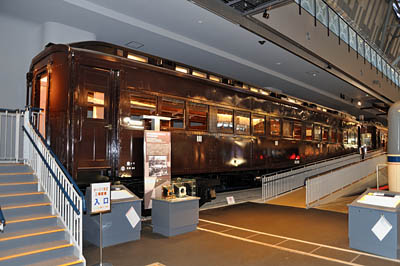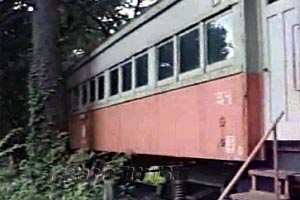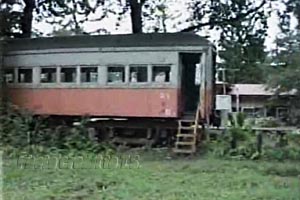
Passenger Car
Class
|
The first steel mass-produced typical passenger car series in pre-WW2. (O = Weight 32.5-37.5 ton, Ha = 3rd passenger class) |

|
|
Most Japanese passenger cars were made from wood until 1926. During September 1926, Sanyo lines's limited express derailment had resulted in many deaths. Most of the dead and wounded were attributed to poor wooden car bodies. As a result, the already begun production of wooden passenger car Class NaHa-23800 was rushed into a new steel design. During March of 1927, the first steel replaced the wooden Class OHa-44400 3rd class passenger car. The 512 OHa-44400s were manufactured up to 1929, and it was in widespread use all over the country. OHa-44400 was renamed the Class OHa-32000 from class name revision during October 1928. During 1941, it was again renamed to the Class OHa-31 No.1-510 with the exception of two cars which were accident damaged. Class OHa-31 based Passenger Car Series-31 were converted for 2nd class passenger car use (present Green Car class), including the Dining car, Luggage car and Sleeping car models. Finally, these Series-31s had over 1,000 cars produced and it became the typical passenger car series in pre-WW2. However, larger sized Series-32 and 35 appeared. OHa-31s rapidly lost their prominence during the early years after the war. Lastly, all of the OHa-31s were retired by December 1966 from JNR's railroad scene.
|
|
Preserved car OHa-31 No.26 (1926 - 1983)
After WW2, more than ten OHa-31s, were sold to private railway companys. Three OHa-31s No.26, 51 and 75 were sold to the Tsugaru-Tetsudo Co. in Aomori prefecture, and they were named the Tsugaru-Tetsudo's OHa-31 No.1, 2 and 3. During 1983, they were retired from the Tsugaru-Tetsudo. Of these OHa-31s, No.1 (ex OHa31-26) was preserved at Ashino Park in Kanagi town, Aomori prefecture after 1985. During July 2007, OHa31-1 was donated to the JNR because of its historic value. And she was transferred to the JR-East Omiya General Rolling Stock Center for remaking.
While OHa31-1 was active on the Tsugaru-Tetsudo, a "Potbelly Stove" was utilized by the car. It was called the "Stove Train" and was a common sight on the Tsugaru Aomori's beautiful local railway scene in the winter. This stove remained at the time of OHa31-1's remaking, and it can be seen at the Museum. In addition, Tsugaru-Tetsudo's stove train was continuously serviced during the winter season (1st Dec - 31st Mar) by other stove cars. |
|
The years of Ashino Park in Aomori
The Inscription of the OHa31-1 displayed at Ashino Park in Aomori during the year of 1987, reads as follows ; |
|
 |  |
Introduction |
Go to Top |